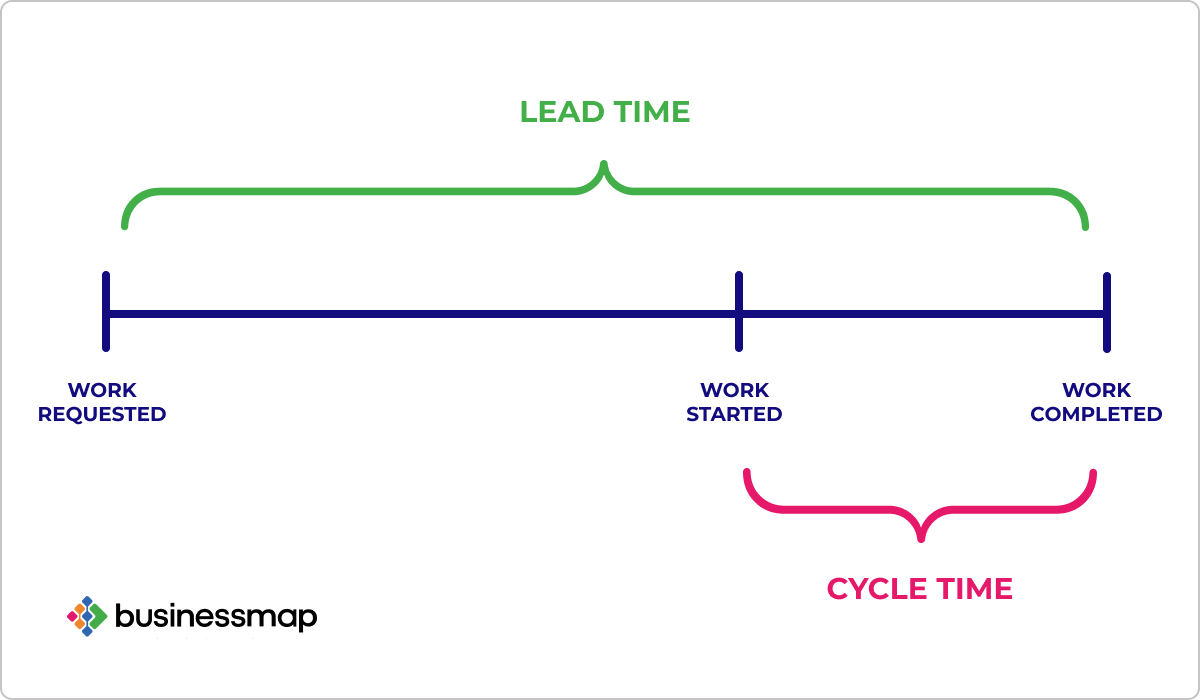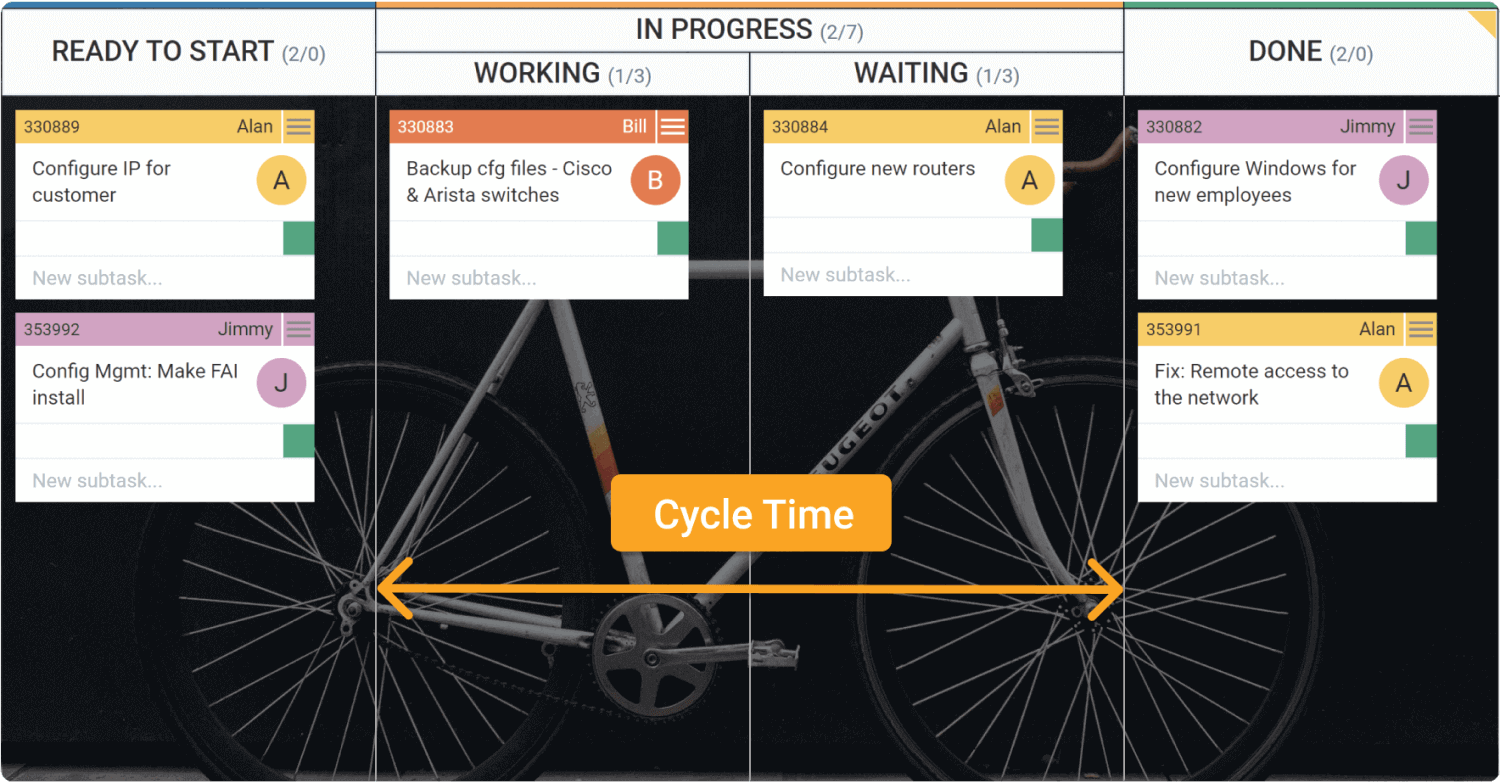Does this title sound confusing? Don't worry. By the end of this article, you will see that it is simpler than you think. You will be able to measure the right cycle time with your eyes closed.
For those of you who are not so familiar with the term, cycle time is one of the most valuable metrics you can use to acquire a better understanding of your work process. It helps you forecast your production process precisely. Those who are familiar with Lean and Agile know that there are two different ways to measure cycle time:
- Excluding non-working hours (plus weekends).
- Including non-working hours.
This is a controversial topic in many organizations practicing Lean or Agile.
So, let's explore these topics further.
Why Measuring Cycle Time Is Important?
Calculating average cycle time offers several benefits that can contribute to the efficiency and effectiveness of operations within your organization.
- Performance Measurement: Average cycle time provides a clear metric for measuring the performance of a process. By knowing how long it takes, on average, to complete a cycle, businesses can establish baselines and benchmarks for performance.
- Process Efficiency Identification: It helps in identifying areas where the process is not as efficient as it could be. Long cycle times might indicate bottlenecks and unnecessary steps that need to be addressed to improve workflow efficiency.
- Prioritization of Improvements: By analyzing the cycle times of different processes in your organization, you can prioritize the ones that would benefit most from improvement efforts. This ensures that the focus shifts to areas with the greatest potential impact.
- Predictability: Understanding average cycle times helps in making processes more predictable. Predictable processes are easier to manage and can be more consistently controlled, leading to streamlined and more reliable project forecasting based on real data.
- Continuous Improvement Mindset: Regularly calculating and focusing on reducing cycle times instills a culture of continuous improvement. It encourages employees to always look for ways to streamline processes, eliminate waste, and enhance productivity.
How to Calculate Cycle Time?
In short, cycle time is the total elapsed time you need to move a task from the moment it enters the "in progress" (working) stage to the moment it is considered finished. So the simplest way to measure the cycle time of an assignment is to count the number of days it spends being worked on.

Today, most modern workflow management systems calculate the average cycle time automatically, but just to know the simplest formula is as follows:
Cycle Time = End Date - Start Date
In other words, if you start a task on the 15th of April and complete it on the 25th of April, then the cycle time is 10 days.
For items that start and finish on the same day, you can modify the cycle time formula to:
Cycle Time = End Date - Start Date + 1
However, most software solutions give you the opportunity to measure cycle time in different ways: excluding or including non-working hours. And here is the potential bone of contention.

When measuring the average cycle time of the tasks on your Kanban board, for example, remember that customers don't care how long you are going to work on something. They only care how long it will take for something to be done. These two perspectives are completely different. Having it in mind will help you make your future predictions much more precise.
Now, let's explore the two options.
How Do You Calculate Cycle Time Without Non-Working Hours?
When a customer (internal or external to your organization) places an order, the only thing that matters to them is the total cycle time for delivering what has been promised.
Let's imagine that you measure the average cycle time without non-working hours and weekends. Based on the historical data of your workflow, the predictions state that your average cycle time is 8 days.
If a customer makes an order, they would expect a deliverable in exactly 8 days. However, your cycle time is calculated only for working hours. This means that you will be able to deliver after 12 days because you don't count weekends as well. From your perspective, the work will get done as planned, but from the customer's perspective, you will be late. This kind of misconception may increase the rate of customer dissatisfaction instead of producing a great customer experience.
Many companies do that in order to reduce their cycle time. But this cycle time reduction is inaccurate and brings confusion.
How Do You Calculate Cycle Time Including Non-Working Hours?
On the other hand, if you measure the cycle time of your assignments by including non-working hours (including weekends), you will be able to meet or even exceed customers' expectations.
For example, on Friday, you promise a customer that something is going to be done in 5 days. This means that the customer will expect to receive what you promised no later than the following Wednesday. Respectively, you will meet the expectations because you calculate the average cycle time including Saturday and Sunday.
Calculate Cycle Time Excluding Holidays
If you tend to exclude non-working hours from your cycle time calculations, you also need to exclude national holidays. This may turn into a huge pain, especially if you work with remote teams. Those teams may consist of people from different geographical locations. This means that you may need to exclude the national holidays of various different countries from the average cycle time. Things can get really messy.
After all, you decide how to calculate cycle time. However, keep in mind, when customers expect something to be done in 30 calendar days, they will not count what your business hours are, whether there are public holidays or if weekends are excluded.
As Daniel Vacanti says, "The easiest thing to communicate is the overall elapsed time. Everybody understands that. And by the way, that's what our customer cares about anyway."
Final Words
Whether you are using a workflow management tool or a physical board to manage your work processes, calculating cycle time is important as it cultivates a mindset for continuous improvement.
As workflow management remains one of the key pillars of our company, we monitor the metric closely, and it gives us insights on how to tweak our processes and work policies to be more efficient.

Pavel Naydenov
Marketing Professional | Kanban & PPM Ops Certified
Pavel is a natural-born optimist with 10+ years of experience in the marketing field. By leveraging Kanban, Lean, and Agile practices for years, he drives brand growth and engagement through data-driven marketing strategies. He believes every message should express the fundamental values of a brand, and if delivered positively, it can change the course of its existence.



